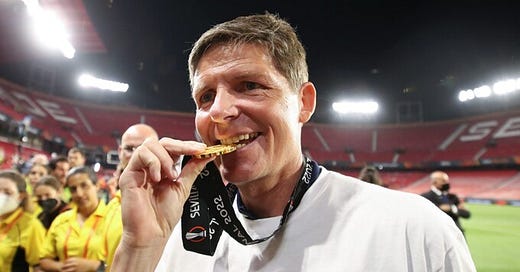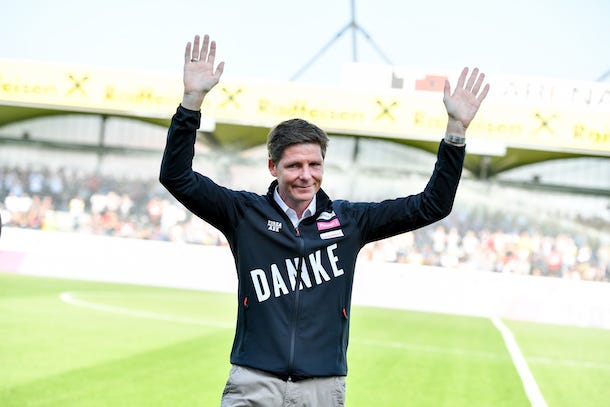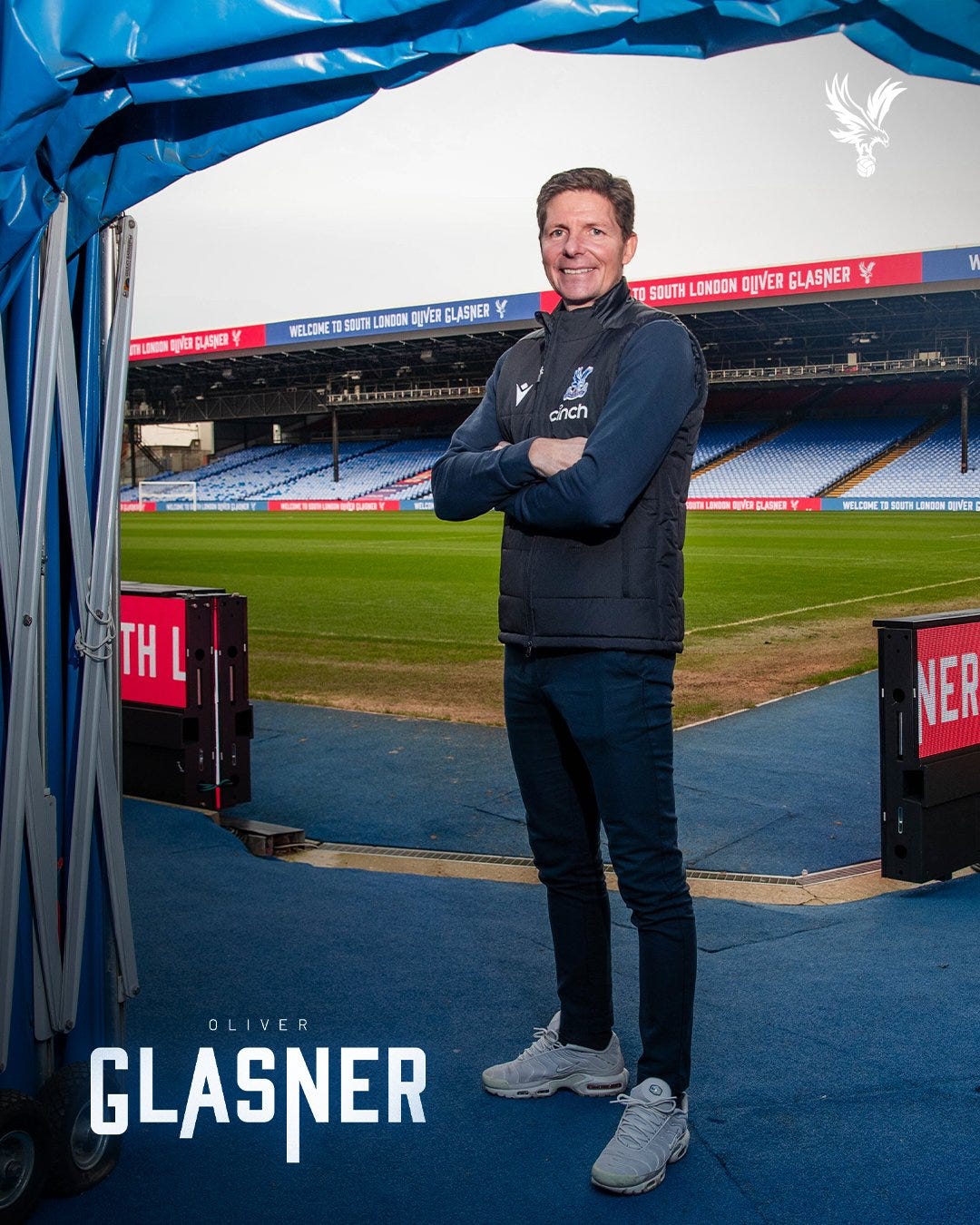Oliver Glasner: What will Crystal Palace’s new Austrian manager bring to Selhurst Park?
The 49-year-old has signed a contract until the end of the 2025/26 season and will be tasked with keeping Crystal Palace in the Premier League this season.
Despite enjoying a decent start to the 2023/24 Premier League season after suffering just two defeats across their opening eight matches in the competition, Crystal Palace’s campaign has failed to come even close to achieving expectations this time around.
As of the time of writing this article, the Eagles sit in 15th spot in the latest standings after dropping two extremely valuable points away to Everton on Monday evening late on. It was the latest in a lengthy list of disappointing results for Palace, and given that the London outfit sit precariously on the edge of an impending relegation battle this term, the decision to relieve veteran manager Roy Hodgson of his duties last week comes as the only reasonable response to their recent form.
There’s no ill feeling there, especially after the 76-year-old wrote a poignant message to fans after his departure, but it was the right choice and now it’s time for Oliver Glasner to help rebuild Palace, both for the short and the long term.
Who is Oliver Glasner?
A defender by trade during his playing career, Glasner grew up in Austria and enjoyed an illustrious career with Austrian Bundesliga club SV Ried where he made over 500 appearances. During that time, the Schärding native enjoyed two promotions with his side and won the Austrian cup on two separate occasions before his playing career was cut short.
After being involved in an aerial collision, Glasner suffered a concussion and less than a month later, he developed a brain haemorrhage which subsequently required emergency treatment. The SV Reid legend thankfully recovered well after surgery, but his career had to be curtailed on doctor’s advice soon after and his playing days were over.
Almost immediately Glasner turned his attention to coaching, joining RB Salzburg as assistant coach to then manager Roger Schmidt. Two successful years in that role soon followed before an opportunity to return to SV Reid materlised. A spell with LASK then followed, with the club winning promotion from the second division under Glasner’s guidance before finishing fourth the campaign after and then second just one year later.
That proved enough for a side in Europe’s top five leagues to come calling and Wolfsburg swooped quickly to bring Glasner to Germany’s Bundesliga. His impact was almost instant at Volkswagen Arena, as the Wolves finished seventh in the league and reached the Europa League Round of 16 stage. Like at LASK prior, he then improved their league standing even further the season after, with Wolfsburg returning to the Champions League thanks to their fourth-placed finish in 2020/21.
That summer, Glasner made the move to Eintracht Frankfurt and for the first time in his career, he really struggled to implement his vision both on and off the field. Amid a backdrop of challenges at the boardroom level due to staff turnover, Die Adler suffered a torrid start to their campaign, losing in the DFB-Pokal first round against third tier opposition alongside a number of poor performances in the Bundesliga. That terrible form subsided for a brief period but an 11th placed finish would see Eintracht finish their domestic campaign way below pre-season expectations.
But even though their success in Germany wasn't forthcoming, Eintracht stunned on the European stage. After defeating Barcelona in the knockout rounds of the Europa League, the Bundesliga outfit went on to reach the final in Seville in which they defeated Rangers on penalties to lift the title. It was the first major honour Glasner would pick up in his budding managerial career and Champions League football would follow for the club the next season.
Again, Eintracht struggled to a 7th placed finish in the German top-flight but would find better form in other competitions. In a competitive-looking UCL group made up of Tottenham, Marseille and Sporting CP, Glasner guided his side to second spot before being knocked out of the tournament at the Round of 16 stage by Napoli. Eintracht would also reach the DFB-Pokal final before losing to RB Leipzig in the showcase final. That would prove to be Glasner’s last match in charge of the club, a year earlier than scheduled.
What can Crystal Palace fans expect from Glasner?
Despite likely having plenty of contract offers following his time with Eintracht, Glasner exercised patience and this week he joined Crystal Palace on a contract until June 2026.
Upon his arrival, he spoke to press stating; “I am very happy to join Crystal Palace F.C. as manager. I am looking forward to working with the talented squad, meeting the club’s supporters and experiencing the Selhurst Park atmosphere I have heard so much about. It has been a pleasure to meet with Steve and Dougie, and I am looking forward to working with them to achieve our goals.”
But what will he bring to Palace and what can the club’s faithful supporters expect?
First of all, he’ll bring expectation with him after his prior stints in management. Trophies and titles have been won, whilst in almost each of his seasons as a coach so far, he’s delivered European football in some shape or form. Granted, that’s a long way off for Palace at present and simply staying in England’s top-flight will be the only aim for the remainder of this campaign, but there’s no way that Glasner will be settling for relegation battles whilst manager of the Eagles if they stay up this time around.
He’ll also bring a wealth of experience with him in terms of helping to turnaround the overall situation at Selhurst Park. Each of his four roles in management have seen Glasner transform his side both on and off the field and if there's one area where Palace need to drastically improve, it’s at the recruitment level. The new manager likely won’t have full control over any moves, especially with chairman Steve Parish holding a hands-on role in the boardroom compared to others in a similar role in the league, but Glasner’s knowledge of the Bundesliga and Austria in general could see signings made from those areas of Europe. His ‘no-nonsense’ approach could lead to potential problems in the future though, and if incoming talent doesn’t line up with his plans, tensions could rise as seen previously in his career.
Lastly, he brings a winning desire with him and an almost need to succeed. Obviously, that sounds a little simple on the face of it, but to date across his career, his 48.7% win-rate across all competitions is testament to his ability to bring success in terms of results. That’s even more impressive when you consider that Glasner is still yet to take charge of a truly massive club in terms of one which has obviously superstars amongst its ranks.
How will Glasner set up his Crystal Palace side?
One of the biggest problems with the later months of Hodgson’s second reign at Palace was his seeming reluctance to change formation and his overall system at the club despite struggling to obtain positive results. It effectively left the Eagles predictable in every match, with the same 4-2-3-1 set up used most weekends.
That’s where the biggest change is likely to come with Glasner’s arrival at Selhurst Park. Throughout his managerial career thus far, it’s difficult to fully pinpoint the Austrian’s favourite formation, with each spell at each of his previous four clubs showcasing his ability to shift systems whenever needed to get the very best out of the players at his disposal.
It’s likely to begin with at Palace that we’ll see a change to a three-at-the-back formation for at least the rest of this campaign, something which arguably suits their squad the best at present when accounting for injuries. Moving forward, the wing backs will make up a four in the middle of the system with two central midfielders tasked with shutting down the centre of the park. In his system at Eintracht, that duo usually consisted of a box-to-box midfielder alongside a more traditional number six who was in that position to solely disrupt play and win back possession for his side. At the same time out wide at full back, both players are tasked with offering plenty of width and attacking positioning, though are expected to create a solid back five when defending.
The 3-4-2-1 set up he frequently used at the Deutsche Bank Park also see’s the two attacking midfielders play much more centrally than traditional wingers overall. That significantly helped Eintracht to advance up the field during matches, with the lone striker being closely surrounded by his two fellow forwards. That doesn't mean that those two in behind the ‘number nine’ don’t offer width when needed, but instead, the emphasis is much more on the first action of taking control of possession in the opposition’s half before then building an attack. With Michael Olise and Eberechi Eze in those advanced roles, Palace fans should be extremely excited by that proposition in particular as arguably, or at least on paper, this system should get the very best out of the pair.

In general, the fundamentals of Glasner’s 3-4-2-1 system are simple, it’s built on crowding out the midfield in order to steal the ball back from the opposition before quickly advancing the possession into the front three. It’s a formation that is focused on playing in the transition and its success can be highlighted with a quick look at the underlying statistics during his time with Eintracht. In the two seasons the 49-year-old was in charge there, Frankfurt ranked 4th for overall tackles won (688) and times winning possession in the final third (347) in the Bundesliga, whilst their nine goals and 52 shots from ‘a fast break’ - defined by Opta as ‘an attempt created after the defensive quickly turn defence into attack winning the ball in their own half’- stacked up well against fellow German sides in the competition.
Elsewhere, his system is also reliant on hard work overall from player to player, a healthy amount of pressing and the ability of players to have both the skill and decision making capabilities needed to take chances on occasion. That’s particularly seen through the two wider central defenders, who are tasked with almost mugging opposition players of the ball wherever they may be on the field, who will on occasion find themselves high up the field in pursuit of their opponent.
If this set up and formation is the one that Glasner implements at Crystal Palace, it will almost instantly make them tougher to break down in comparison to the way in which they’ve been performing of late, something that is of the utmost importance to their Premier League survival chances this campaign..







